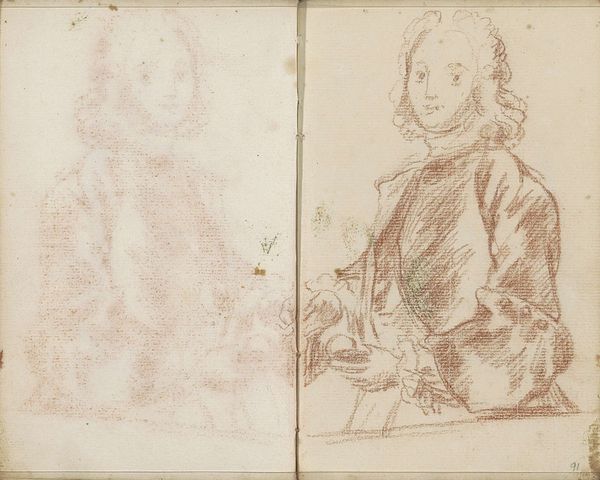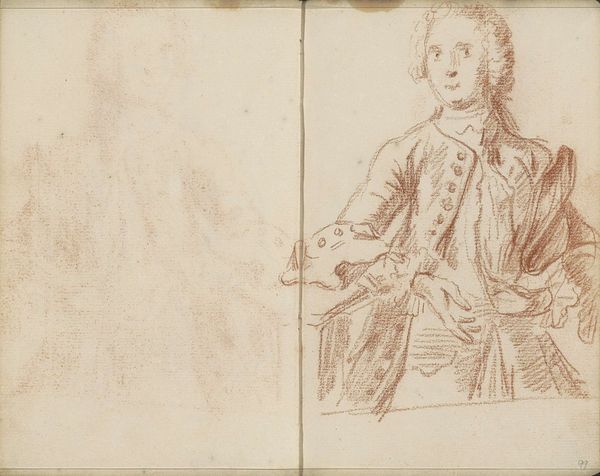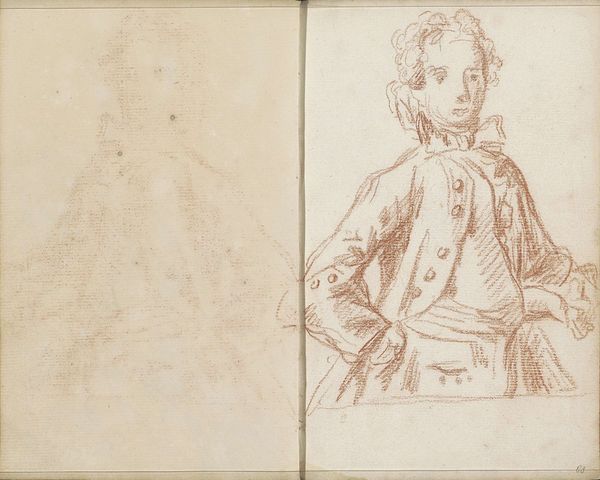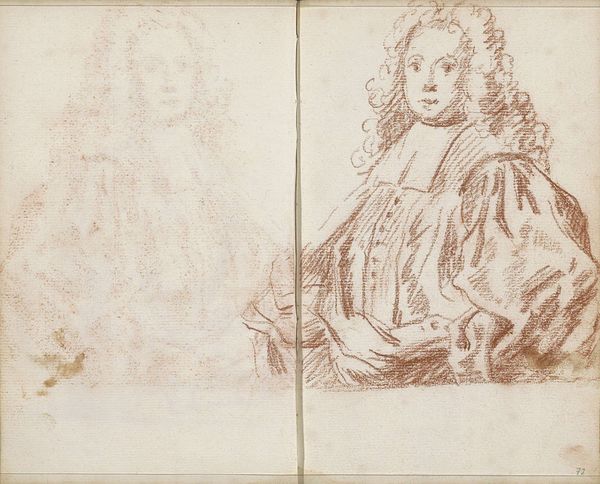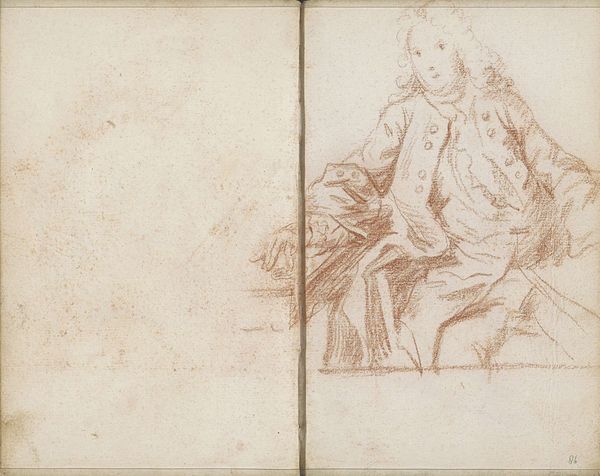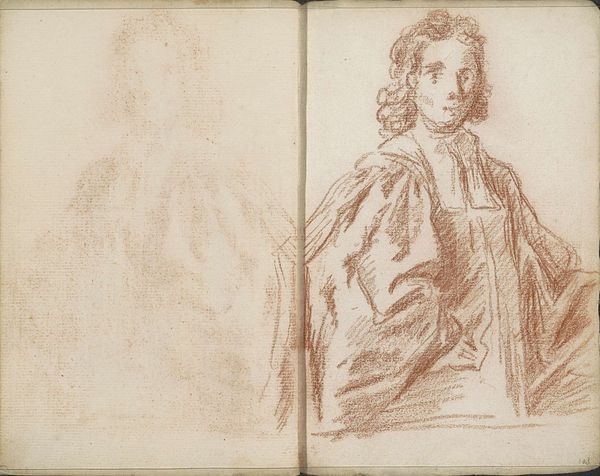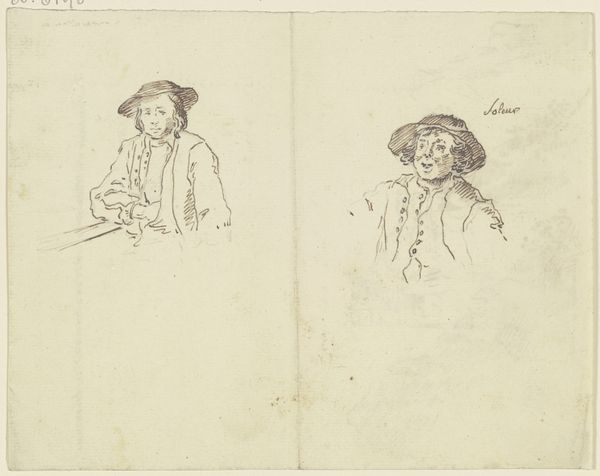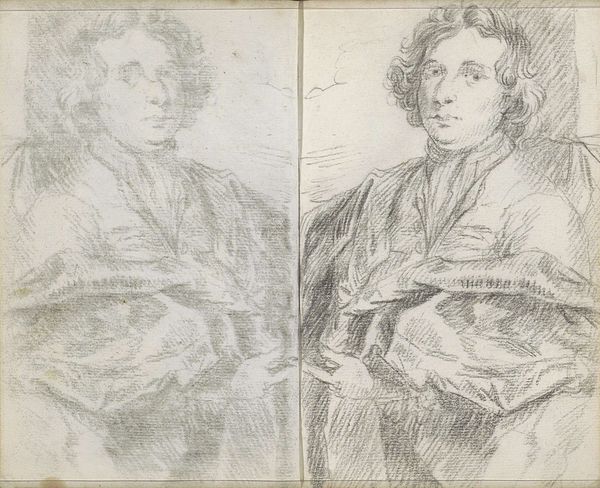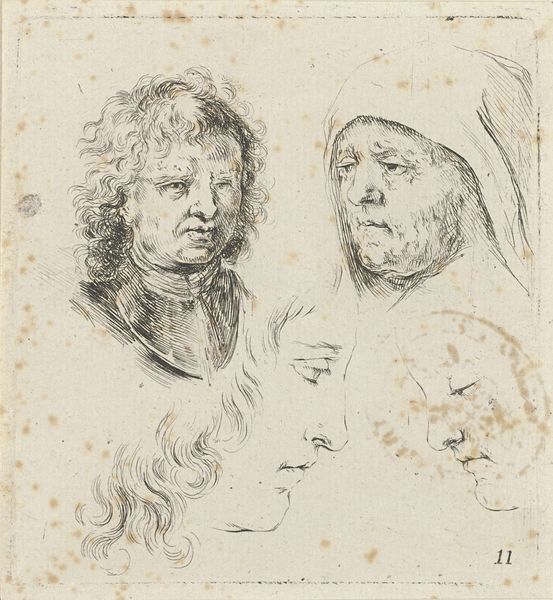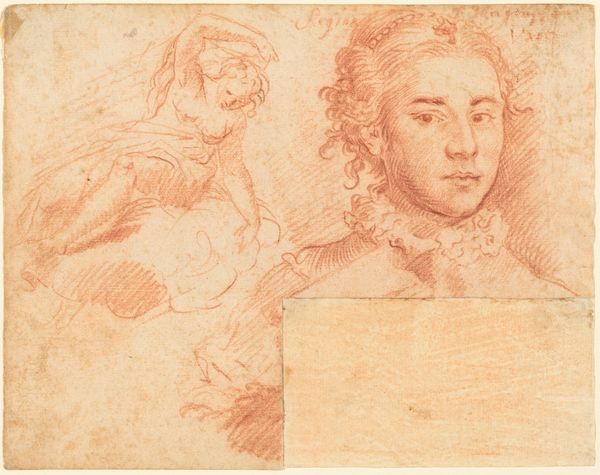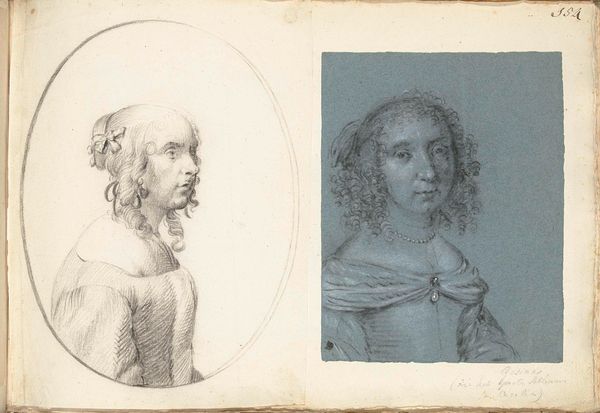
drawing
#
portrait
#
drawing
#
academic-art
Copyright: Rijks Museum: Open Domain
This drawing of a man in sanguine was made by Petrus Johannes van Reysschoot in the 18th century. Sanguine, or red chalk, is an earthy pigment, and a popular choice for sketches like this one. The artist would have prepared his sticks of chalk by grinding the pigment and mixing it with a binder, likely a gum arabic solution, before rolling and drying it. The very directness of the medium means that van Reysschoot could achieve subtle gradations of tone, by varying the pressure of his hand. Notice how lightly he has marked out the composition on the left-hand side. By contrast, the more detailed figure on the right has a real sense of presence. Drawings like this were often made in preparation for larger paintings, or as independent works of art for sale and collecting. But it’s also likely that van Reysschoot simply enjoyed the tactility of the medium, and the relative ease with which it allowed him to capture the likeness of his sitter. This direct engagement with materials and process should remind us that all artworks, no matter how seemingly simple, involve skilled labor and creative decision-making.
Comments
No comments
Be the first to comment and join the conversation on the ultimate creative platform.
